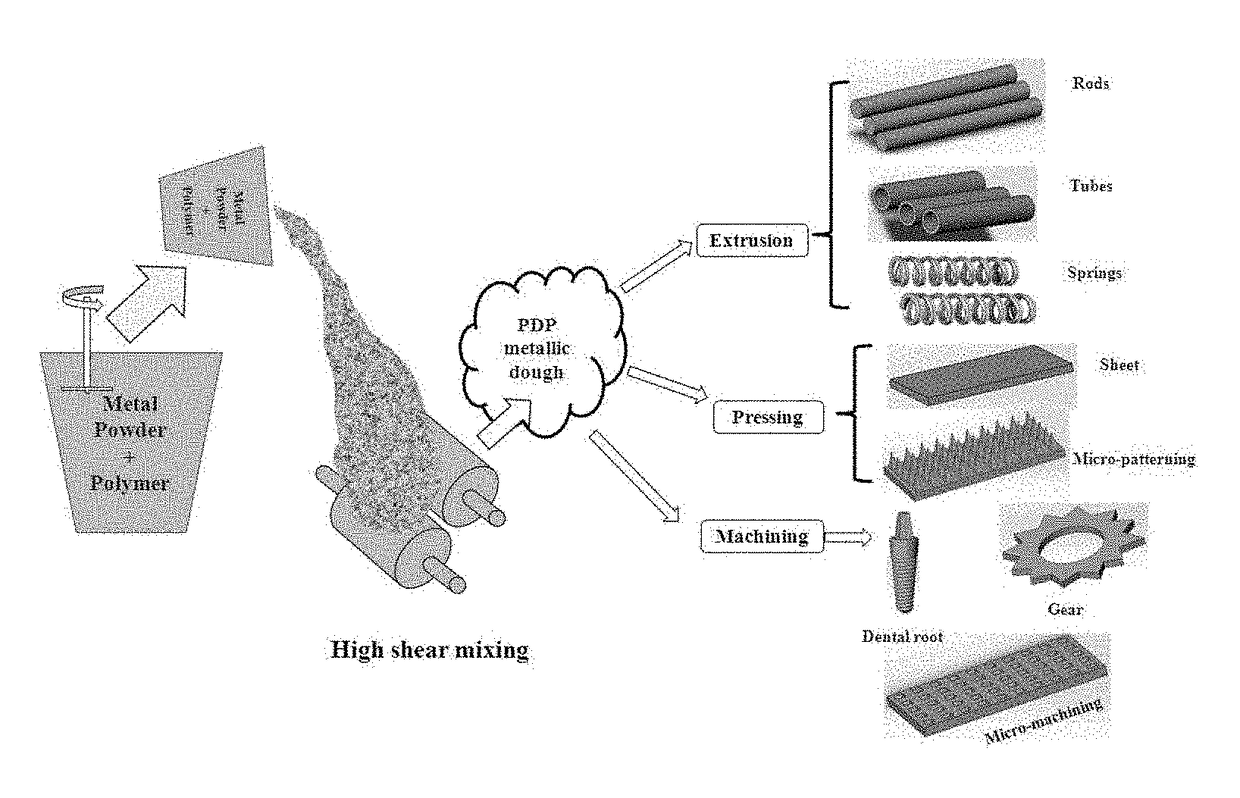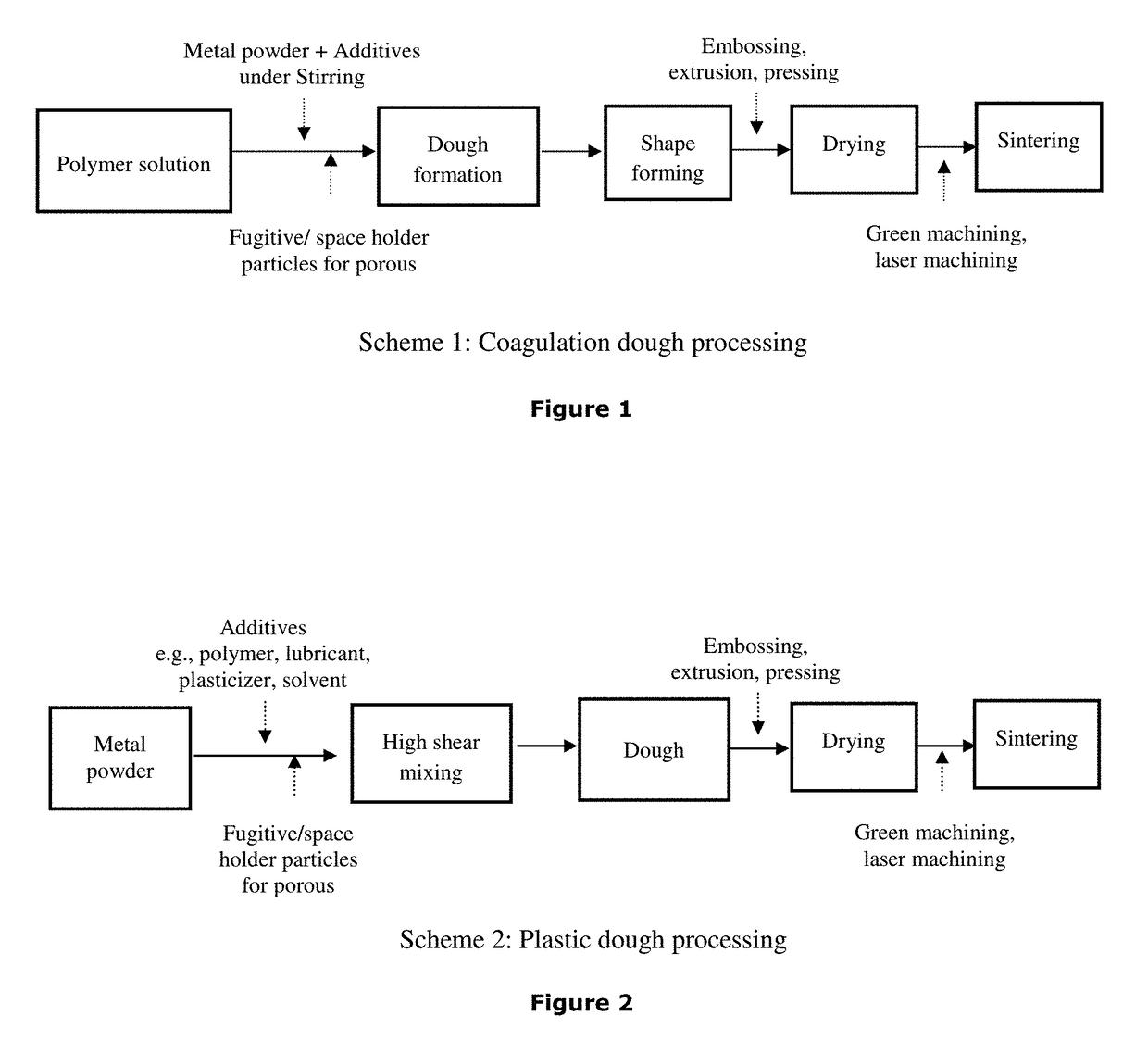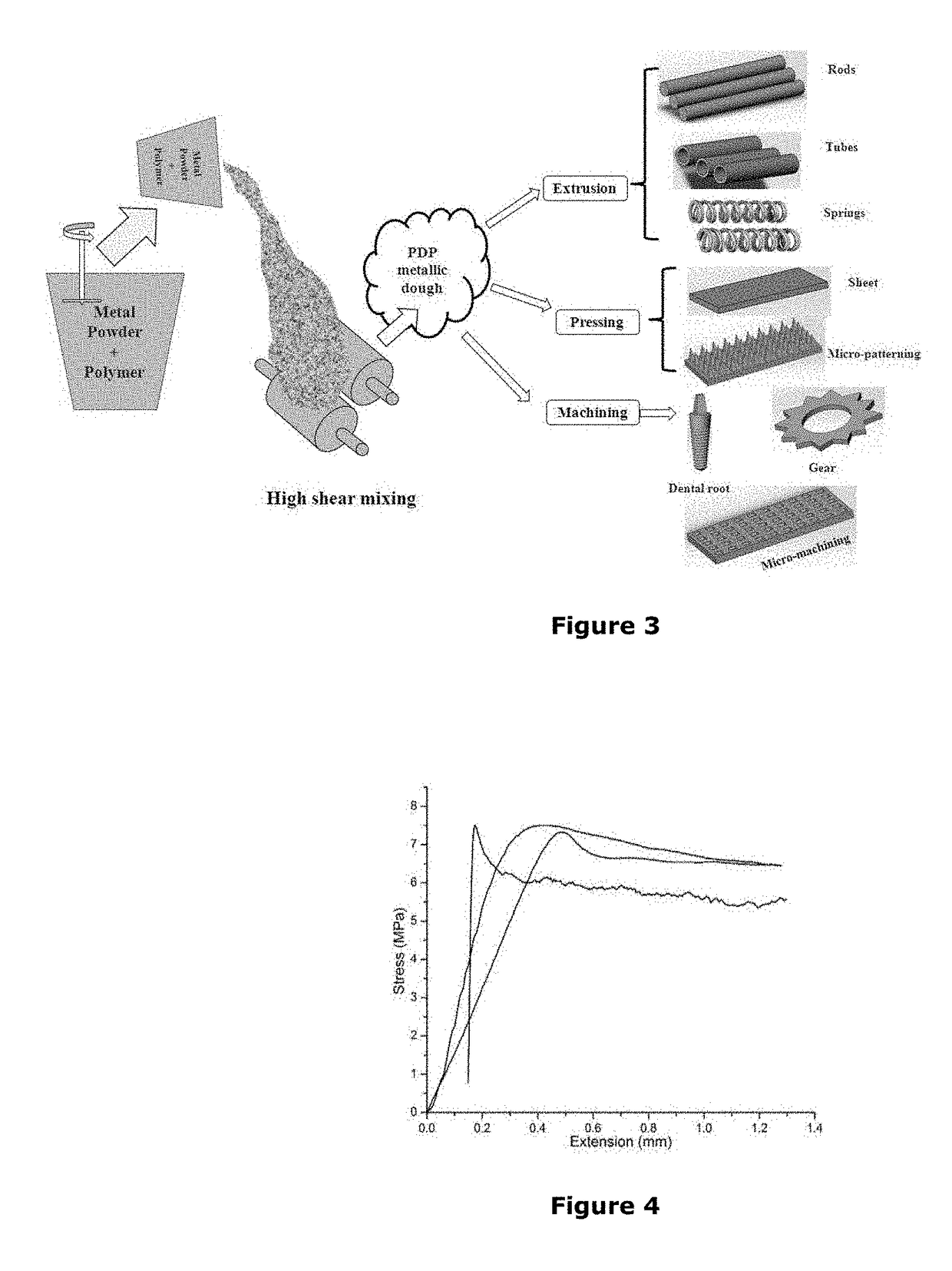Process of dough forming of polymer-metal blend suitable for shape forming
a technology of polymer-metal blend and dough, applied in the direction of metal-working apparatus, transportation and packaging, etc., can solve the problems of inconvenient machining of metal blocks by cutting and drilling to fabricate desired shapes, high cost, and inability to produce any other shape, etc., to achieve the effect of rapid processing
- Summary
- Abstract
- Description
- Claims
- Application Information
AI Technical Summary
Benefits of technology
Problems solved by technology
Method used
Image
Examples
example 1
on Dough Processing with / without Foaming
Ia: Coagulation Dough Processing (CDP) (Method 1 / Scheme 1): (without Foaming)
[0071]
TABLE 1Actual composition used in coagulation doughprocessing for dense / and porous componentsRelativePreferredAdditivepercent% wrtrange (wt %Compositionnature(wt)metalof metal)Ti6Al4V PowderMetal powder80Polymer (e.g. eggPolymer1620.01-50white)Coagulant (e.g.,Coagulant3.24.00.1-10 NH4Cl / NH4NO3 / citric acid)Other additive (e.g.Thickener0.81.00.1-10 sugar)Fugitive / Spacer¥67.51-15Foaming agentSolvent (e.g., water)Solvent1012.53-30Total weight100¥Optional
[0072]Dough processing according to the Method 1 (FIG. 1) is based on the composition of Table 1. Of all the ingredients as mentioned in Table 1, measured quantities of metal powder, polymer powder, glycerol, solvents were mixed in a beaker by mechanical stirring for 10-30 minutes depending upon the volume. Viscosity of the initial mix was measured to be 100-1000 Pa·s at Shear rate 0.02 s−1. Subsequently, coagulants ...
example 1b
ng
[0074]For preparation of cellular solids, the prepared dough (as per the process described above in Example 1a,) before the roll milling step (FIG. 1), was stirred vigorously to incorporate air bubbles into the mix to attempt providing porous products. However, it was difficult to form direct foam through entrapment of air bubbles. The volume fraction of entrapped air bubbles was significantly less and highly random in nature. Overall, the process had very poor foaming ability owing to high viscosity of the mix. The resultant green body had very poor mechanical properties and relatively poor microstructural repeatability for considering it as dense or porous structures. Thus the process was excluded for any value addition.
example 1c
[0075]To overcome the problem in Example 1b, all ingredients other than metal powder, as mentioned in Table 1, were mixed by vigorous stirring and subsequently, metal powder was slowly added under low shear mixing range from 0.1-100 s−1. Dough obtained through this technique can be cast by gentle tapping without further roll milling into different shapes like blocks, rods, hollow structures by using different mold, dried and sintered to obtain porous structures (FIGS. 5B and 8). Sucrose or any other thickener can be optionally added to the composition to impart stability of dough. Fugitive / foaming agents can be added to the composition for interconnected secondary macropores (FIG. 5C). Components developed by this process can be utilized in various structural and functional applications such as automobile, aerospace and biomedical fields.
PUM
| Property | Measurement | Unit |
|---|---|---|
| pressure | aaaaa | aaaaa |
| pressure | aaaaa | aaaaa |
| temperature | aaaaa | aaaaa |
Abstract
Description
Claims
Application Information
 Login to View More
Login to View More - R&D
- Intellectual Property
- Life Sciences
- Materials
- Tech Scout
- Unparalleled Data Quality
- Higher Quality Content
- 60% Fewer Hallucinations
Browse by: Latest US Patents, China's latest patents, Technical Efficacy Thesaurus, Application Domain, Technology Topic, Popular Technical Reports.
© 2025 PatSnap. All rights reserved.Legal|Privacy policy|Modern Slavery Act Transparency Statement|Sitemap|About US| Contact US: help@patsnap.com



